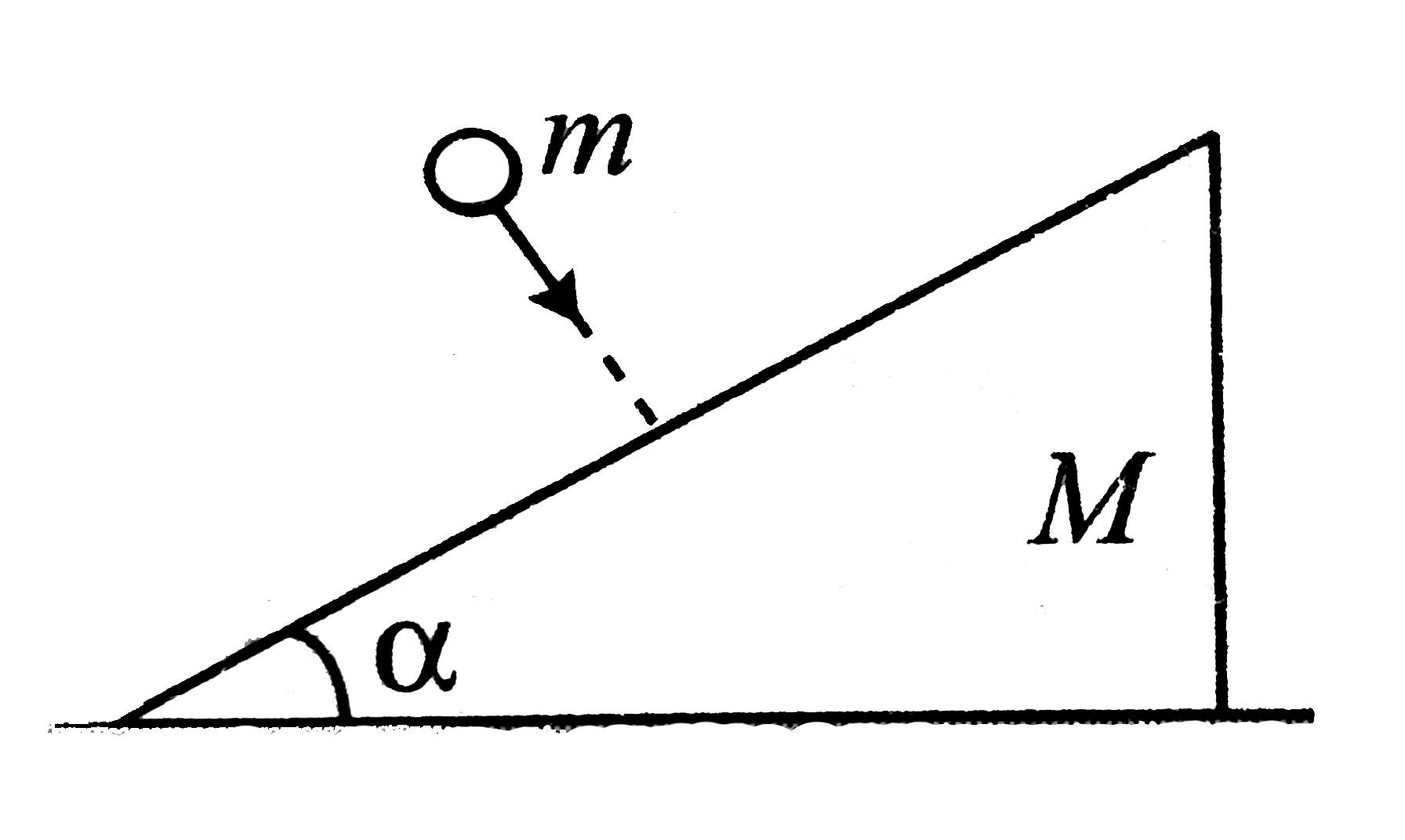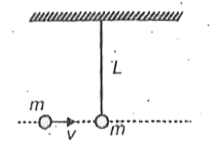Ball A of mass m strickes a stationary ball B of mass M and undergoes an elastic collision. After collision bill A has a speed one third of its initial speed. The ratio of M/m is
14
12
2
4
To solve the problem, we will use the principles of conservation of momentum and the properties of elastic collisions. Here’s the step-by-step solution:
Step 1: Understand the scenario
- Ball A (mass = m) strikes stationary Ball B (mass = M).
- After the collision, Ball A has a speed of u3, where u is the initial speed of Ball A.
Step 2: Apply the conservation of momentum
The law of conservation of momentum states that the total momentum before the collision is equal to the total momentum after the collision.
Before collision:
- Momentum of Ball A = mu
- Momentum of Ball B = 0 (since it is stationary)
Total initial momentum = mu+0=mu
After collision:
- Momentum of Ball A = m(u3)=mu3
- Let the velocity of Ball B after the collision be V. Thus, momentum of Ball B = MV
Total final momentum = mu3+MV
Setting the initial momentum equal to the final momentum:
mu=mu3+MV
Step 3: Rearranging the momentum equation
Rearranging the equation gives:
mu−mu3=MV
2mu3=MV
Step 4: Use the coefficient of restitution for elastic collision
For an elastic collision, the coefficient of restitution e is defined as:
e=Relative speed after collisionRelative speed before collision
Since e=1 for elastic collisions:
1=V−u3u−0
Step 5: Solve for V
From the equation:
V−u3=u
V=u+u3=3u3+u3=4u3
Step 6: Substitute V back into the momentum equation
Now substituting V back into the momentum equation:
2mu3=M(4u3)
Cancelling u (assuming u≠0):
2m3=4M3
Step 7: Solve for the ratio Mm
Cross-multiplying gives:
2m=4M
Mm=12
Conclusion
The ratio Mm is 12.
- Ball A (mass = m) strikes stationary Ball B (mass = M).
- After the collision, Ball A has a speed of u3, where u is the initial speed of Ball A.
The law of conservation of momentum states that the total momentum before the collision is equal to the total momentum after the collision.
- Momentum of Ball A = mu
- Momentum of Ball B = 0 (since it is stationary)
- Momentum of Ball A = m(u3)=mu3
- Let the velocity of Ball B after the collision be V. Thus, momentum of Ball B = MV
mu=mu3+MV
Rearranging the equation gives:
mu−mu3=MV
2mu3=MV
For an elastic collision, the coefficient of restitution e is defined as:
e=Relative speed after collisionRelative speed before collision
Since e=1 for elastic collisions:
1=V−u3u−0
From the equation:
V−u3=u
V=u+u3=3u3+u3=4u3
Now substituting V back into the momentum equation:
2mu3=M(4u3)
Cancelling u (assuming u≠0):
2m3=4M3
Cross-multiplying gives:
2m=4M
Mm=12
The ratio Mm is 12.
Similar Questions
A body of mass m1 collides elastically with a stationary body of mass m2 and returns along the same line with one fourth of its initial speed, then m1/m2=
View SolutionA body of mass m1 moving at a constant speed undergoes an elastic head on collision with a body of mass m2 initially at rest. The ratio of the kinetic energy of mass m1 after the collision to that before the collision is -
View SolutionA particle of mass m1, makes a head on elastic collision with another stationary body of mass m2 If m1, rebounds with half of its original speed then (m1m2) is
View SolutionTwo balls of equal masses m each undergo oblique collision. If colision is perfectly elastic, then angle between their velocities after collision is
View SolutionA ball of mass 4 kg moving on a smooth horizontal surface makes an elastic collision with another ball of mass m at rest in the line of motion of first ball. If after collision first ball moves in the same direction with one fourth of its velocity before collision, then mass of second ball is
View SolutionA body of mass m1 collides elastically with another body of mass m2 at rest. If the velocity of m1 after collision is 23 times its initial velocity, the ratio of their masses is :
View SolutionConsider an oblique elastic collision between a moving ball and a stationary ball of the same mass. Both the balls move with the same speed after the collision. After the collision, the angle between the directions of motion of two balls is x degree. Find the value of x.
View SolutionTwo particles of mass mA and mB and their velocities are VA and VB respectively collides. After collision they interchanges their velocities, then ratio of mAmB is
View SolutionA ball of mass m collides with a stationary wedge of mass M, perpendicular to its inclined face, inclined at an angle as shown in the figure. If the coefficient of restitution between the wedge and ball is e, calculate the ratio of modulus of velocity of the ball immediately after and before collision. Also calculate the velocity of wedge just after collision.

View SolutionA small ball of mass m moving with speed v (>√2gL) undergoes an elastic head on collision with a stationary bon of identical mass of a simple pendulum of length L. The maximum height h, from the equilibrium position, to which the bob rises after collision is

View Solution
